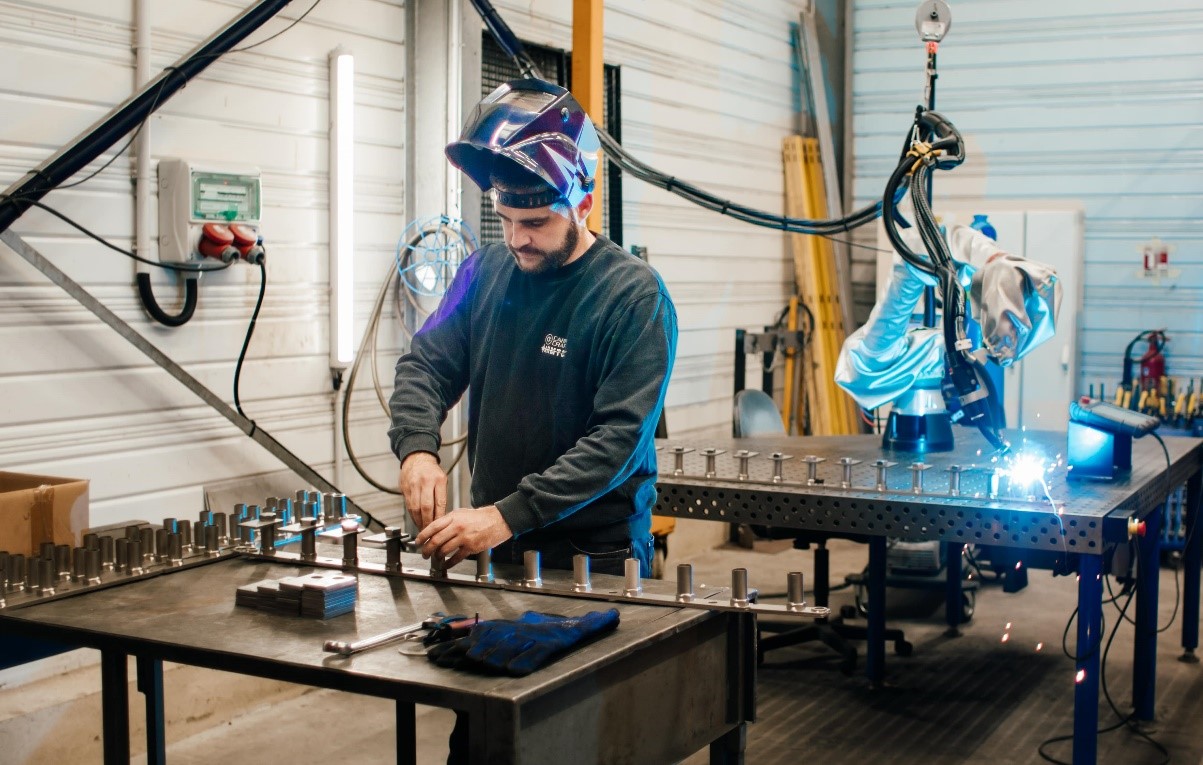[ad_1]
Much more flexible than welding robots and very easy to use, cobots are a real asset for industrial SMEs. Enhanced safety, exceptional weld quality, support for welders for difficult tasks, increased productivity… welding cobots only have advantages! Michel Fantou, director of the ARMTOP company, gives us his opinion after a year of use by his teams of the CO-BRO® solution from Universal Robots, for the welding of thin sheets.
In April, we offered you a file dedicated to welding in industry, and in particular an article on the subject of cobotized welding. This article is part of a new file which complements the previous one.

Michel Fantou is the manager of ARMTOP, a fine sheet metal company located near Saint-Nazaire, which he bought in 2009 with Corinne Fontaine.
With its 15 employees, the SME created in 1990 is a recognized subcontractor in France in the field of welding on thin sheet metal.
Engineering techniques: What is the core activity of the ARMTOP company?
Michel Fantou: Since its creation in 1990, ARMTOP has specialized in the shaping of thin sheet metal elements, between 1 and 2 mm thick. We also work on other thickness ranges, even thinner (0.2-0.3) or very thick (more than 20 mm), but the 1 to 2 mm range represents 80% of our activity.
Our extensive machine fleet allows us to carry out most shaping operations on sheet metal: bending, shearing, cutting, punching, paneling, surface treatment and of course welding.
When it comes to welding and assembling materials, we are also very well equipped: MIG, TIG, spot welding, clinching, brazing, etc.
Finally, the range of materials that we process is also very varied, since we work with steel as well as stainless steel, aluminum, copper and brass.
Why did you invest in a welding cobot?
Through our material investments, we seek to offer our customers the best in technology. For example, our CO laser cutting equipment2 acquired a decade ago will soon be replaced by more efficient fiber laser cutting.
A few years ago we invested in a robotic cell like those found in automobiles. Unfortunately, we quickly realized that this equipment did not meet our needs. The main disadvantage was the programming aspect, too long and complex, which requires the presence of an automation engineer, in addition to that of the welder.
This type of equipment is made to process large volumes, so we understood that it was not suitable for an SME like ours.
In 2022, we therefore replaced this robot with a cobot. We wanted a fully integrated solution, which took care of everything: arm movement, welding parameters, fume suction management, all controlled by a tablet.
Our objective was not to seek a gain in productivity, but really to help welders gain working comfort, by supporting them with difficult and repetitive tasks.
Has this solution been well received by your teams?
Even if it was always out of the question to want to replace welders, we had to remove doubts and fears, because you should know that for a welder who has more than 30 years of experience, the transition to cobotics is far from being obvious!
So we took our time. Before committing to this investment, we discussed a lot internally with our teams and set up a two-day “discovery” training course in our factory to ensure buy-in from our teams.
The handling was almost immediate. In one day of training, they mastered the operation of the robotic arm. Paradoxically, it was the operation of the welding station which took the longest to understand, since it took two days.
Ultimately, the reception was very good, because the tool is simple and allowed welders to progress in their practice of the profession.
Have you still noticed a gain in productivity?
Clearly, yes. With a year of hindsight, we see that for certain series of parts, we went from one day of production to half a day. Since we have this cobot, we are getting more parts out with less effort.

But I must say that what really impressed us was the exceptional quality of the welds produced by the cobot.
We interpret this in several ways. On the one hand, in cobotic welding, the welder is more attentive to the quality of the result obtained. The reason is, I believe, human: once launched into manual production, the welder concentrates on the action of welding, he is not in reflection, but in action. In cobotics, he spends more time upstream in analysis and reflection, carries out tests and refines the settings more thoroughly than with a manual welding station. It is more demanding, which raises the level of quality.
On the other hand, the quality of the equipment must also be taken into account, in particular the precision of the settings and the repeatability. We thus see perfect regularity in the welds. Finally, the possibility of modifying the welding parameters in real time is also very interesting, because this is impossible in traditional welding, since the welder must keep his hands on the torch.
And what about HSE aspects?
Concerning the security aspect, cobotics has also enabled great progress. Thanks to the numerous effort sensors with which the motors are equipped, we can now work in complete safety in the cobot’s working area, something impossible with a robot installed in a closed cell.
As for welding fumes, here again, the progress is obvious, since a very efficient suction unit is directly installed on the torch. As we are freed from the constraint of weight, the suction system is therefore sized to be more powerful.
[ad_2]
Source link